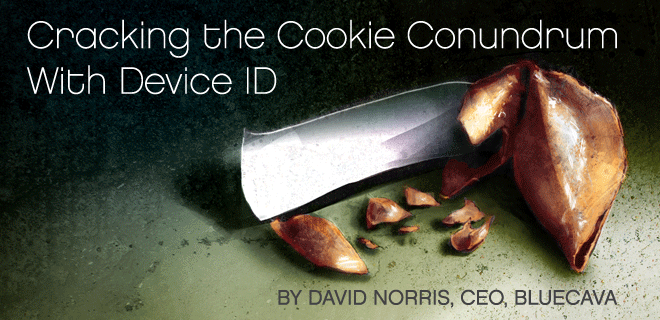
Device identification. You’ve read about it, heard about it or thought about trying it, but maybe you’re still not quite sure of what the benefits are or why you’d consider an alternative to cookies in your online advertising strategy.
Cookies, of course, have been the cornerstone of online measurement and data collection since the dawn of online advertising. But, with speculation swirling about the implications of the new EU cookie law – the ePrivacy Directive, which will begin being enforced in the UK in May 2012 – many marketers in the EU and around the world are scrambling to find a reliable alternative to keep their targeting strategy afloat.
Enter device identification. But what does it do and what problem does it solve?
Here’s the Skinny
It is understood in the online marketing community that one of the critical factors in making websites successful is having the capability to know and recognize visitors. Traditionally, this has been accomplished through web cookies and their equivalents (e.g., Flash cookies). Unfortunately, there are inherent problems with this method: (1) Users routinely delete their cookies, (2) cookies have an expiration date and (3) even when web cookies do work, they only provide a view to a single device – a serious limitation when most people often browse the Internet through two or more devices.
Each of these limitations leave website owners with only a fragmented view of their users. For instance, without a way to consistently identify a user’s saved preferences on a particular site (e.g., remembering login information), marketers are hindered in their ability to recognize a loyal customer from a one-time visitor and tailor their offering accordingly.
Device ID technology is the ideal solution to the problem of remembering what a user has seen and what actions he or she has taken: over time, between devices and across domains. This includes desktop computers, tablets, mobile phones and game consoles.
Unlike cookies or other locally-stored data, device ID technology does not depend on writing something to the device. This key difference makes the latter solution less invasive and more resilient. Because nothing gets written to the device, there is nothing for the user to react to and potentially delete.
In addition, if you operate sites in different domains there is no “cookie synchronization” needed between them. Device ID is typically a centralized, hosted service, which means each company using the service will benefit from insights derived from each other customer, without having to share any proprietary information. For instance, if you’re a publisher, you’ll be able to get a much more succinct and cohesive view of your audience (across all your sites) without having to rely on a fragmented cookie-based solution.
Device ID can also help businesses understand visitor behavior across devices belonging to the same person or the same residence – a concept generally referred to as “householding.” Householding allows marketers a myriad of benefits. One is the ability to correlate mobile traffic with traditional web traffic. For example, an airline that serves a mobile ad promoting a discounted flight deal can now accurately pinpoint the mobile ad view as the point of conversion for the eventual purchase on a separate device.
Okay, So How Does It Work?
The fundamental technology behind device ID is the ability to recognize and uniquely identify individual devices (computers, mobile phones, etc.), and to do it at a scale and speed that works in the online world.
The secret sauce of device identification is literally in its name: It works by identifying users by their device, not by their personally identifiable information (e.g., phone number, social security number, etc.) To do this, the technology takes a snapshot of each device and then applies proprietary algorithms to match that snapshot to the same listing in the device ID database.
The device identification platform is generally implemented as small JavaScript tag on one or more pages of the site with a corresponding HTTP call to the device ID-hosted service. The result is a device token that businesses can use as a persistent identity for each device.
The device tokens can be integrated into analytics tools, Web optimization tools, eCommerce engines, or customer relationship management tools. The tokens can even be passed into the advertising ecosystem as persistent identities that third-party data providers, ad networks, ad exchanges and others can use to bolster existing databases.
The Bottom Line
In short, as the cookie-based model crumbles around us, advertisers need to be thinking proactively about how to continue to reliably recognize their visitors and target their audiences. Device identification technology is viable route to consider.
 |
Up to date on the latest happenings in the automated trading space? OPS Markets will bring digital advertising leaders and ops professionals together to discuss and develop best practices for operational excellence in the evolving automated landscape. Register today for OPS Markets, which will be held April 18, 2012, in New York. |